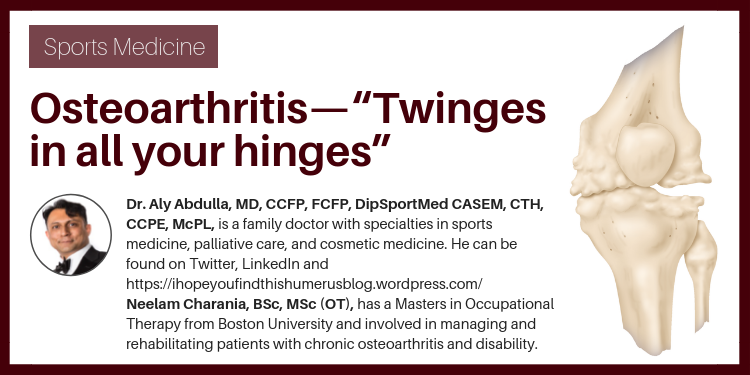1 is a family doctor with specialties in sports medicine, palliative care, and cosmetic medicine. He can be found on Twitter, LinkedIn and https://ihopeyoufindthishumerusblog.wordpress.com/
2 has a Masters in Occupational Therapy from Boston University and involved in managing and rehabilitating patients with chronic osteoarthritis and disability.

